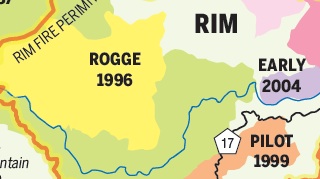Creating a Dynamic Strategic Plan that Engages the Enterprise

Having a strategic plan is a vital aspect of any successful organization. Unfortunately, most organizations have strategic plans that are really financial plans in disguise. And the larger the organization, the more true this statement is. In other words, the goals of the strategic plan are monetary goals.
Having goals related to profits is fine, but that’s only one element of a strategic plan. You also need a plan for what you’re doing to de-commoditize your commodities—those products and services with increasingly thinner margins and greater competition. You need a plan that outlines what you’re going to do to differentiate yourself from your competitors. You need a plan that details your innovation strategies for creating new products and services that drive new markets. Those key elements are often missing in a financially focused strategic plan.
So yes, financial planning is a vital component of strategic planning; it helps your company reach your financial goals. But true and thorough strategic planning also looks at how you gain new competitive advantages and other broader concepts that can accelerate growth beyond the target numbers of a financially focused plan. Therefore, your strategic planning needs to be a mix of financial planning (strategies to reach financial goals), strategy focused planning (strategies to create sustainable competitive advantage), long-range planning (using research to determine future positions), and tactical planning (to determine your execution strategies).
An old saying tells us, “Failing to plan is planning to fail.” That saying has never been truer for companies than today, which is why having a strategic plan is so essential. But just having an annual strategic planning process that creates a fixed, static plan is no longer enough. Today it’s important to build change into the plan and have the ability to adapt it in real-time because the world and markets are changing so quickly. In other words, it’s time for companies to do some dynamic planning.
Dynamic versus Static Planning
These days, a traditional static plan is becoming less desirable and less effective, and a dynamic plan is becoming more relevant and imperative. What’s the difference? A static plan is a document, either digital or printed, that is published, shared with key employees, and then put in a file cabinet or digital folder. In contrast, a dynamic plan goes beyond one-way informing and also communicates the plan in a two-way, on-going dialog to everyone in the enterprise. A version is also shared with strategic partners. It’s a living, breathing, and evolving entity that everyone engages in and supports. Think of it like this:
• A dynamic strategic plan communicates rather than informs. It’s a two-way dialogue between the company leaders and the employees.
• A dynamic strategic plan reaches beyond the company walls and goes out to strategic partners. After all, how are your strategic partners going to help you if they don’t know what you’re trying to do?
• A dynamic strategic plan evolves. It elicits dialogue and input from others. It can be continually refined and improved. This is in contrast to a static strategic plan, which is sent out to employees with the expectation that they’ll adapt to the plan rather than the plan adapting to them and the market.
Why are these three points so important? Because with a typical static strategic plan, people may not have time to read the plan, they may not agree with the plan, and they may not take action on it. In addition, they may find major flaws in the plan but have no means to provide risk-free feedback regarding their concerns.
However, with a dynamic strategic plan, you’re communicating with people and you get feedback. You’re not telling people the plan after the fact. Rather, you’re showing them the plan and asking for their help with identifying potential challenges. The goal is to solve the problems before they occur.
Following are some additional hallmarks of a dynamic strategic plan:
• Break it down. Remember that big lists rarely get done. Therefore, it’s important to highlight and break down the plan into its elemental strategic imperatives. And if you have more than five, you have too many. The magic number is three. Why break a long plan down into basic elements? Because you want everyone in the organization to know the basic elements. If they don’t know them, you won’t accomplish them. If people have to look them up, they won’t. However, if it’s broken down into short elements, it’ll stay top of mind. When it’s top of mind every day, people will know what the strategic imperatives are and will be more likely to attain them. Having the plan broken down into its basic elements is like having a guide that leads your organization to the future.
• Tell stories. Bring the words of your company’s strategic plan to life by turning it into story form so that it becomes visual for people. Have the plan paint a picture in every employee’s mind’s eye so they can see what this plan will do and where the company is going. Visuals are powerful. If you’ve never seen what E=MC2 means—the visual of it—then you still don’t understand Einstein’s theory of relativity. However, those who see it in a visual story format understand it. For many organizations, a strategic plan can be complex and often just as hard to understand as the theory of relativity. Therefore, take the complexity in your plan and simplify it; boil it down to what it means to the employees and the company, and help everyone see it in their mind’s eye. Some companies have gone as far as hiring a graphic artist to paint a mural that depicts the plan. They put the mural in the lunchroom or in the entryway to the building. It becomes a visual that depicts the plan, including the outcome. Talk about getting a story ingrained in people’s minds!
• Go multimedia. While your dynamic strategic plan could be a document, it could also be a video that people watch…and it could be an audio they listen to…and it could be a picture they look at…and it could be any combination of things. Remember that people learn in different ways. Some people prefer to read a book, while others prefer to listen to a book in audio form. The people who prefer to read the book wonder why anyone would listen to a book. And those who prefer to listen to a book wonder why anyone would purchase a printed book. Since we all learn in different ways, it only makes sense to put the strategic plan out in various formats. If you put the strategic plan out in one format, then you’re only engaging one learning style within an organization that has multiple styles. In fact, in a world where multimedia is easy and the tools are relatively free, there’s no excuse for not getting the strategic plan in multiple formats.
• Get social. Social media an ideal way to make a strategic plan dynamic. There are internal secure versions of various social media platforms, such as Twitter and Facebook. Simply do a Google search to find them. The key word to remember is “social.” It’s about creating engagement and involvement. For example, as employees execute the plan, you can be tweeting success stories, accomplishments, and roadblocks—all in an effort to gain feedback and ideas. Additionally, you can be using online collaborative tools to work with the different groups that are executing the plan so everyone can see where the other parties are in need of help. Unfortunately, most organizations still have silos and fiefdoms. A dynamic strategic plan tends to break them down and get everyone headed in the same direction.
Gain Engagement
The bottom line is that truly successful and innovative companies will have a strategic plan that is in motion. They’ll have a dynamic document that can be added to, massaged, and refined with graphics, video, and audio. They’ll have an internal, multimedia website and app versus a static and informing one. In short, they’ll have something that’s dynamic and moving. That’s simply impossible to do without technology.
So the key for leaders is this: You need to engage people with your plans rather than inform them of your plans. But because most executives don’t know what is now technically possible, they’ll never ask for a dynamic strategic plan. Therefore, it is important to get your CIO involved to help create and drive the ideas and show the organization what’s possible. In fact, the only way to do a dynamic plan is with strategic vision and technology.
With the rapid pace of change, the traditional static planning system is a dinosaur. Most people do it only because they have to. Now is the time to redefine what a strategic plan is—for the organization, for the employees, and for the limitless opportunities such a plan affords everyone involved.
*****
DANIEL BURRUS is considered one of the world’s leading technology forecasters and innovation experts, and is the founder and CEO of Burrus Research, a research and consulting firm that monitors global advancements in technology driven trends to help clients understand how technological, social and business forces are converging to create enormous untapped opportunities. He is the author of six books including The New York Times best seller Flash Foresight.





